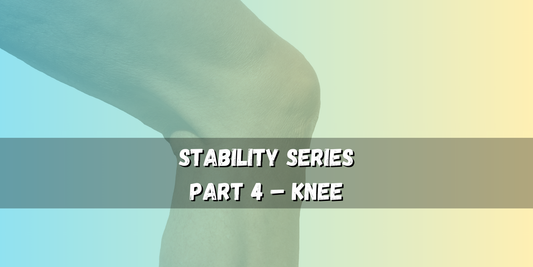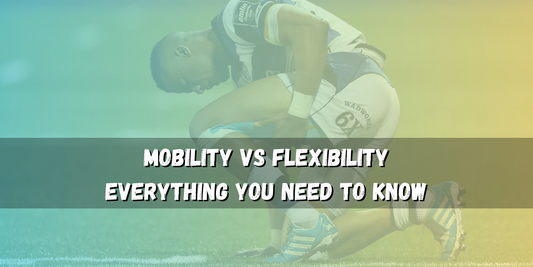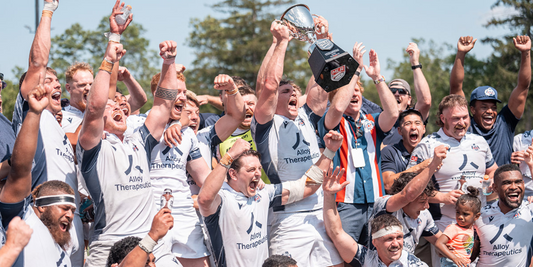If you want to hold onto the ball, control tackles, and stay injury-free in contact, your wrist and grip strength need serious attention.
This article breaks down how to build durable, powerful wrists and a crushing rugby grip—with exercises that improve hand control, reduce wrist injuries, and help you dominate breakdowns, tackles, and offloads.
You’ll also get access to a downloadable 5-day wrist and grip training routine with cues, video links, and simple progressions you can add to your weekly sessions.
Here’s how the series looks like:
- Part 1: How to Build a Strong Core for Rugby
- Part 2: How to Build Strong Legs for Rugby
- Part 3: How to Build Strong Shoulders for Rugby
- Part 4: How to Build a Strong Back for Rugby
- Part 5: How to Build a Strong Neck for Rugby
- Part 6: How to Build Strong Wrists and Grip for Rugby
- Part 7: How to Build Strength for Rugby
- Part 8: How to Build Power for Rugby
- Part 9: How to Build Speed for Rugby
Let’s move to your next foundation: your wrists and grip.
WHY WRIST AND GRIP STRENGTH MATTER IN RUGBY
Your hands are the final link in the chain of power. From carrying and offloading to tackling and contesting the ball—your ability to grip, hold, and control matters.
A strong grip and resilient wrists help you:
- Catch, carry, and offload under pressure
- Dominate in tackles and jackal situations
- Reduce risk of wrist sprains, strains, and impact injuries
- Maintain control when fending or breaking tackles
- Improve transfer of strength in pulling, pushing, and lifting
In a sport where every inch matters, a stronger grip can mean the difference between winning and losing the contact battle.
UNDERSTANDING WRIST & GRIP FUNCTION FOR RUGBY
The wrist and forearm complex controls hand positioning, finger flexion, and load absorption in dynamic movements.
To build real-world strength, you need to address:
1. Wrist Flexors and Extensors
These control bending and straightening at the wrist—crucial in passing, catching, and bracing for impact.
2. Finger Flexors and Intrinsic Grip Muscles
Responsible for grip strength, ball control, and holding onto jerseys, balls, and opponents.
3. Forearm Rotation (Supination/Pronation)
Allows you to turn the palm up or down—important in tackling, wrestling for possession, and offloads.
4. Wrist Stability & Impact Resistance
You need reactive, stable wrists to handle knocks, sudden tugs, and awkward landings.
RUGBY-SPECIFIC GRIP DEMANDS
Grip strength in rugby is more dynamic than in static gym lifts. You need:
- Isometric grip endurance for holding onto the ball and jersey
- Explosive hand strength for fends, tackles, and jackals
- Wrist mobility and control under load
- Grip recovery between collisions and plays
Whether you’re in the scrum, open field, or defensive line, wrist and grip strength are constantly tested.
THE TRAINING PROGRESSION
Grip and wrist development must balance strength, mobility, and resilience. Here’s how:
1. Mobilize and Activate
Loosen stiff wrists and activate forearms:
- Wrist rolls and figure-8s
- Open/close hand flicks
- Finger band extensions
- Wall wrist circles
2. Isolate and Strengthen
Build targeted strength and control:
- Wrist curls and reverse wrist curls
- Wrist rotations with dumbbell or hammer
- Plate pinches and fingertip carries
- Captains of Crush or grippers
3. Integrate and Condition
Train grip during movement and fatigue:
- Farmer’s carries (thick handles, towels, or fat grips)
- Dead hangs (progress to single-arm)
- Rope climbs or towel pull-ups
- Rugby-specific carries (med ball, odd objects)
Progress from mobility → isolated strength → integrated grip endurance for best results.
KEY TAKEAWAY: STRONG GRIP = RUGBY CONTROL
Your grip is your connection to the game. It’s how you catch, carry, fight, and finish. If you want to own collisions, secure the ball, and reduce hand or wrist injuries—start treating your grip like a major muscle group, not an afterthought.
Build it smart. Build it strong.
GET YOUR FREE WRIST & GRIP TRAINING ROUTINE
Want a simple, effective grip routine to add to your weekly training? Enter your email below to get your free copy. We’ll send it straight to your inbox.
This free PDF includes 5 rugby-specific grip & wrist training blocks—each featuring 2 to 3 exercises built to:
- Strengthen your hands, wrists, and forearms
- Improve grip endurance and control
- Reduce injury risk in contact
Download it now and start training like a rugby athlete.
If you found this article helpful, don’t forget to:
- Like and share this post with your teammates and fellow rugby fans
- Bookmark the blog to stay updated on the next rounds
- Follow @gopeakrugby on X and Facebook and subscribe to our Youtube Channel for more rugby analysis, match recaps, and insights


















